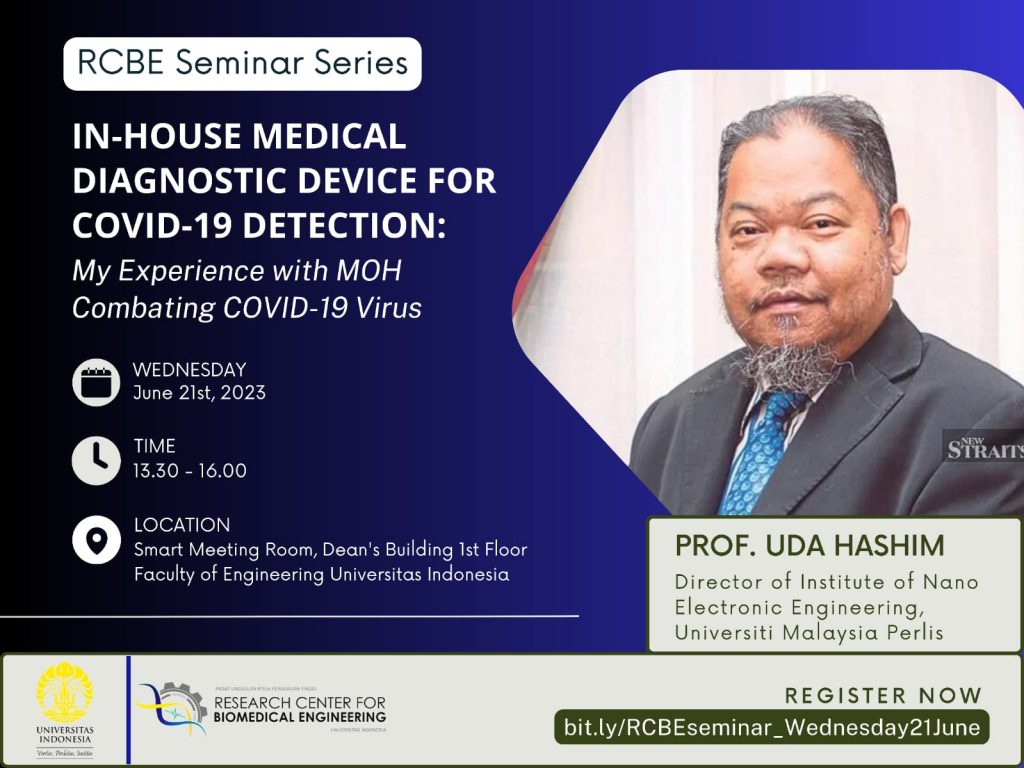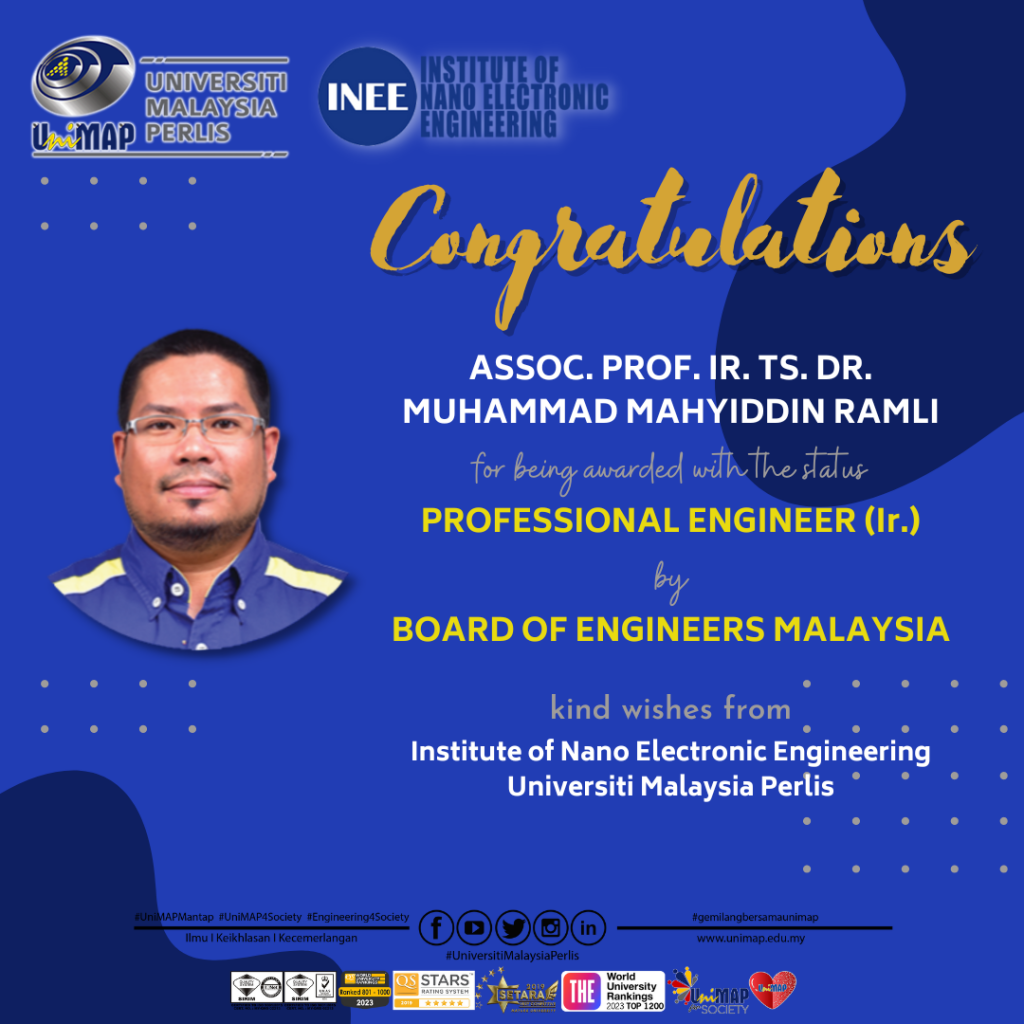
RCBE Seminar Series by Prof. Ts. Dr. Uda Hashim

Institute of Nano Electronic Engineering
Universiti Malaysia Perlis
By Editor

By Editor

By Editor

Congratulations to Associate Professor Ir. Ts. Dr. Muhammad Mahyiddin Ramli, the director of the Institute of Nano Electronic Engineering (INEE), Universiti Malaysia Perlis, on receiving the Professional Engineer (Ir.) award from the Board of Engineers Malaysia (BEM).
Sincerely from all the members of INEE, UniMAP.
By Editor
Abstract – In the last few decays, the fiber-optic was employed in the field of sensing because of its benefits in contrast to other types of sensors such as small size, easy to fabricate, high response, and flexibility. In this study, unclad single mode fiber-optic sensor is proposed to operate at 650 nm wavelength. COMSOL Multiphysics 5.1 finite element method (FEM) is used to design the sensor and tested it theoretically. The middle portion of the fiber cladding is removed and replaced by gold nanoparticles (Au NPs) of 50 nm thickness. Analytic layer of 3 μm thickness was immersed in different liquids in range of refractive index (RI) from 1.000281 to 1.39. These liquids are NaCl Deionized (DI) water solution, sucrose-Deionized (DI) water solution, and glycerol solution Deionized (DI) water. It was found that the highest obtained sensitivity and resolution are for glycerol-DI water solution with value of 3157.98 (nm/RIU) and 3.16 × 10–5 (RIU), respectively. Furthermore, it is easy to fabricate and of low cost. In experiments, pulsed laser ablation (PLA) was used to prepare Au NPs. X-ray diffraction (XRD) shown that the peak of the intensity grew as the ablated energy increased as well as the structure crystallization. Transmission electron microscopy (TEM) revealed an average diameter of 30 nm at the three ablated energies, while X-ray spectroscopy (EDX) spectrum has indicated the presence of Au NPs in the prepared solution. The photoluminescence (PL) and ultraviolet–visible UV–Vis transmission were used to study the optical properties of the prepared Au NPs. An optical spectrum analyzer was used to obtain the sensor’s output results. It has shown that best intensity was obtained for sucrose which confined with theoretical results.
Corresponding Author: Prof. Dr. Subash C B Gopinath
Corresponding Author’s Email: subash@unimap.edu.my
Download Abstract: PDF
Link to Publication: https://doi.org/10.1038/s41598-023-32852-6
Institute of Nano Electronic Engineering, Universiti Malaysia Perlis
Lot 106, 108 & 110, Blok A, Taman Pertiwi Indah,
Jalan Kangar-Alor Setar, Seriab 01000 Kangar, Perlis, Malaysia
Tel: +604-979 8581 Fax: +604-979 8578 Email: webmaster.inee@unimap.edu.my